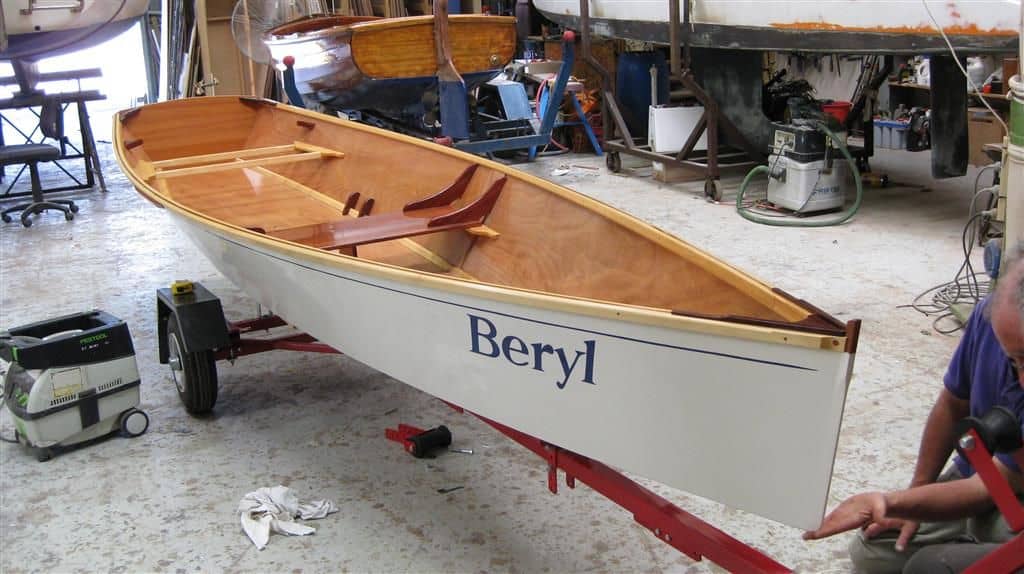
How to Build a Rowboat on a Budget: DIY Plans and Ideas
The allure of gliding across tranquil waters in a boat you built yourself is undeniable. Building a rowboat from scratch presents a rewarding challenge, allowing you to create a personalized vessel for fishing, exploring, or simply enjoying the serenity of the water. This guide provides a comprehensive overview of the process, focusing on cost-effective solutions and DIY strategies to make your rowboat building journey achievable.
Conceptualizing Your Rowboat
Before diving into the construction process, it's crucial to establish a clear vision for your rowboat. This involves determining its intended use, size, and desired features.
Purpose and Usage
Consider how you plan to use your rowboat. Will it primarily be used for fishing, recreational paddling, or carrying cargo? This will influence its design and features.
Size and Dimensions
The length, beam (width), and depth of your rowboat will dictate its stability, capacity, and rowing effort. A smaller rowboat is more manageable but offers limited capacity. Larger rowboats provide greater stability and carrying capacity but require more effort to row.
Features
Decide on the features you desire, such as:
- Rowlocks: These are the metal fittings that hold the oars in place.
- Seats: Comfortable and secure seating is essential for longer rowing sessions.
- Storage compartments: Consider the need for compartments to store fishing gear, supplies, or other items.
- Outboard motor mount: If you intend to use a small outboard motor, ensure the design accommodates a mount.
Materials and Tools
The heart of your rowboat lies in the materials you choose. The most common options are:
Wood
- Marine plywood: Known for its durability and resistance to moisture, marine plywood is an excellent choice for rowboat construction.
- Cedar: This lightweight and naturally water-resistant wood is often used for rowboat construction, especially for smaller boats.
- Oak: Strong and durable, oak provides excellent structural support.
Aluminum
- Aluminum sheet: Lighter than wood and highly resistant to corrosion, aluminum is a popular material for boat construction, especially for smaller rowboats.
Tools
- Circular saw: For cutting wood and aluminum.
- Jig saw: For intricate cuts and curved shapes.
- Drill press: For drilling holes accurately and efficiently.
- Sanding tools: For smoothing surfaces and ensuring a smooth finish.
- Clamps: For securing pieces during assembly.
- Measuring tape: For precise measurements and ensuring accuracy during construction.
- Level: For ensuring straightness and stability of the boat.
- Screwdriver: For fastening screws.
- Caulking gun: For applying sealant to seams.
DIY Rowboat Plans
Having a detailed plan is essential for successful rowboat construction. There are several ways to acquire plans:
Online Resources
Numerous websites offer free or paid rowboat plans. Some popular options include:
- BoatPlans.com: Provides a wide variety of plans for different boat types, including rowboats.
- WoodenBoat.com: Offers plans and articles for wood boat enthusiasts.
- Duckworks.com: Features plans for small boats, including rowboats, designed for DIY construction.
Boat Building Books
Books dedicated to boat building provide detailed plans, instructions, and insights into the process.
Local Boat Builders
Contact local boat builders or marine supply stores for recommendations on plans or potential collaborations.
Cost-Effective Strategies
Building a rowboat on a budget requires careful planning and resourcefulness. Consider the following cost-saving strategies:
Used Materials
- Salvaged wood: Look for usable wood from construction sites, demolition projects, or even reclaimed barn wood.
- Second-hand tools: Consider buying used tools from online marketplaces or local hardware stores.
DIY Solutions
- Making your own oars: Oars can be constructed from readily available wood and metal.
- Fabricating seats: Simple wooden seats can be crafted using basic tools and materials.
Negotiating Prices
- Bulk purchases: Buy materials in bulk when possible to negotiate lower prices.
- Seasonal sales: Take advantage of seasonal sales on wood, tools, and other boat building supplies.
Construction Process
The construction process involves a series of steps, from laying down the keel to applying the final coat of paint:
Laying the Keel
The keel is the backbone of the rowboat, providing its primary structural support. It is typically constructed from a single piece of wood or multiple planks.
Building the Frames
Frames, or ribs, provide the boat's shape and stability. They are typically made from wood and attached to the keel at regular intervals.
Planking
Planking involves attaching sheets of plywood or wood planks to the frames, creating the boat's hull.
Deck and Transom
The deck provides a platform for passengers or cargo and may include features like a seat or storage compartments. The transom forms the rear of the boat and provides support for the outboard motor, if applicable.
Finishing and Painting
After assembly, the rowboat needs a thorough sanding and finishing. This involves applying sealant to protect the wood from water damage and painting the hull to prevent corrosion and enhance its appearance.
Final Touches
Once the rowboat is built and painted, it's time to add those final touches that make it your own:
Rowlocks
Install rowlocks securely to the boat's gunwales, ensuring they are level and aligned.
Seats
Securely install the seats, ensuring they are comfortable and positioned appropriately for rowing.
Storage Compartments
Build and install storage compartments, if desired, to keep gear organized and dry.
Launching and Enjoying Your Rowboat
The moment you've been waiting for: launching your handmade rowboat. Take precautions, use a boat ramp if available, and always wear a life jacket.
Rowing your own creation is a unique experience. Enjoy the quiet solitude, the gentle rocking of the water, and the sense of accomplishment that comes from building something with your own hands.








No comments:
Post a Comment